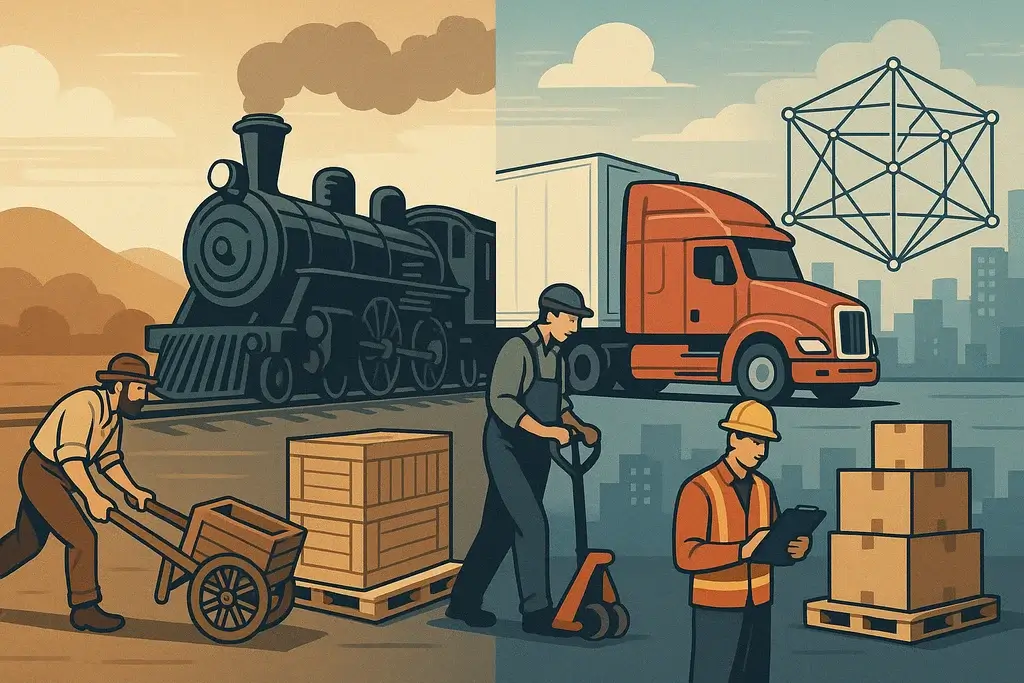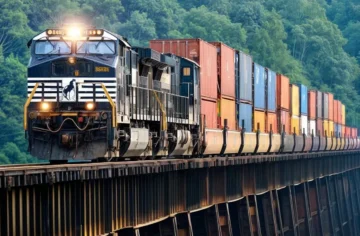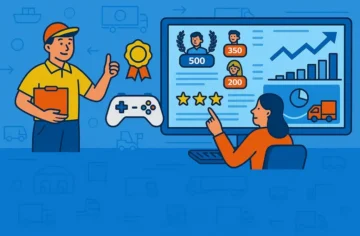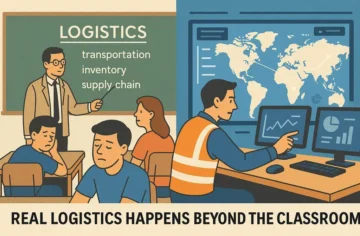When we talk about the future of logistics, our minds often jump to automation, drones, or AI-powered systems. But to truly understand where we’re going, it’s worth pausing to appreciate how far we’ve come. The last hundred years have completely reshaped how goods move around the world. Logistics has gone from hand-written orders and diesel trucks to global, tech-driven ecosystems capable of real-time tracking and predictive analytics.
Here’s a look at how we got here—and where we’re headed next.
The Early 20th Century: Foundations of Modern Supply Chains
The logistics landscape of the 1920s was basic. Most cargo was moved by rail or early trucks powered by newly introduced diesel engines. A quiet but powerful shift happened in 1925: the invention of the pallet. This simple innovation allowed warehouses to stack goods vertically, maximizing space and improving efficiency.
World War II: Necessity Drives Innovation
As global conflict erupted in the 1930s and ’40s, logistics moved to the front lines. Supplying troops across vast distances required faster, safer, and more reliable transportation and storage solutions. This pressure led to the development of more sophisticated packing materials, standardized containers, and safer loading techniques—many of which still shape logistics today.
The Birth of the Shipping Container
In the 1950s, one invention would forever change global trade: the standardized shipping container. Introduced in 1956 and gaining popularity in the following decades, it enabled faster loading and unloading of cargo, reduced theft, and made intermodal transportation—by truck, train, and ship—seamless.
Digital Enters the Scene
The 1960s and ’70s saw the first steps toward digital transformation in logistics. IBM computers started replacing paper-based systems. In 1975, the first real-time warehouse management systems (WMS) allowed businesses to track inventory and deliveries more accurately. Around the same time, barcodes began revolutionizing package identification.
Scaling Up with ERP and Integration
The 1980s and ’90s were all about integration. Enterprise Resource Planning (ERP) systems gave businesses a holistic view of their supply chains. Companies started building internal logistics capabilities, moving beyond third-party providers to have more control over their operations.
This period laid the groundwork for global logistics networks as we know them today—faster, smarter, and increasingly connected.
2000s to Today: Real-Time, Predictive, and Data-Driven
Since the turn of the century, logistics has entered the “always-on” era. Technologies like GPS, RFID, cloud-based systems, and IoT sensors have made it possible to monitor shipments in real time. AI and machine learning are being used for route optimization, demand forecasting, and dynamic warehousing.
Companies no longer just manage logistics—they anticipate problems before they happen.
The Next Frontier: AI, Blockchain, and Human-Centric Gamification
As we step into the next chapter, three forces are shaping the future of logistics:
Artificial Intelligence is improving forecasting, streamlining operations, and reducing costs. From autonomous vehicles to warehouse robots, AI is becoming an invisible workforce that works alongside human teams—not instead of them.
Blockchain introduces trust and transparency at scale. It’s already being used to track goods, verify provenance, and reduce fraud in complex supply chains.
And now, platforms like SLT (Smart Logistics Token) are adding a new layer—gamification and incentive-driven engagement.
SLT brings a human-centered approach to logistics by turning real-world logistics tasks into interactive, rewarding experiences. Through tokenized incentives, leaderboards, and community engagement, SLT:
- Rewards high performance and innovation
- Increases job satisfaction
- Encourages collaboration between professionals and technology
At a time when human factors are often overlooked, SLT aligns perfectly with the principles of Industry 5.0: empowering people, not just automating processes.
Final Thought
The last hundred years of logistics have been defined by moments of transformation—from diesel trucks to containers, from barcodes to AI. The next century will be shaped by how we integrate advanced technologies with human potential.
Platforms like SLT are not just following the trend—they’re redefining it. As AI and blockchain continue to evolve, expect logistics to become not only faster and more efficient but also more inclusive, interactive, and intelligent.
The future isn’t just about moving goods. It’s about moving smarter—together.




